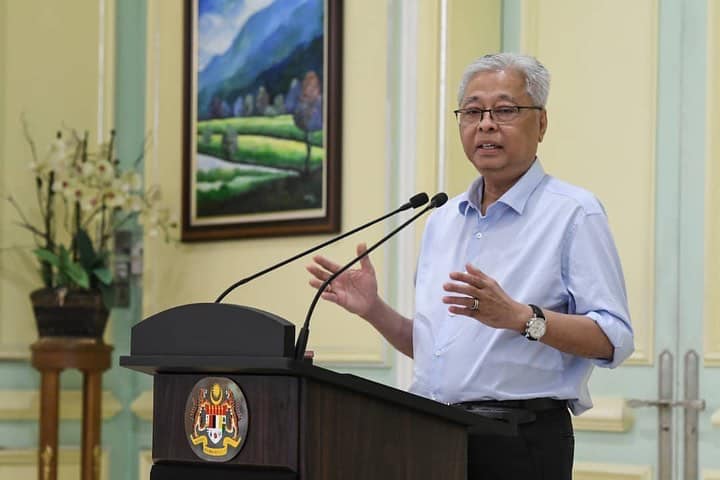KUALA LUMPUR, August 10 — Ismail Sabri Yaakob today suggested that the Ministry of Health (MOH) conduct research on the efficacy of various types of face coverings in reducing Covid-19 transmission.
After the police began issuing RM1,000 compounds to individuals for not wearing face masks or wearing them incorrectly in public areas since August 1, the defence minister today asked MOH to do research on whether plain fabric can be used as a face covering to prevent the transmission of the coronavirus.
“As long as the face is covered, like the nose and mouth — those who wear the purdah, for example — do they still need to or do not need to wear a mask? What about selendang or head coverings in certain states that can be used to cover the face, is that okay? I have instructed MOH to study this,” Ismail Sabri told a press conference today.
He also added that a three-ply fabric mask may be expensive for some individuals, as it requires a specific type of fabric that has been approved.
“We also suggested MOH to conduct research if a face shield alone will be adequate to protect oneself from the Covid-19 virus,” Ismail Sabri said.
“The cost of the face shield, as I have understood, is around RM2 to RM4 and can be reused for months by just washing it.”
Ismail Sabri’s remarks today came after public backlash over perceived selective prosecution under the face mask rule that came into effect on August 1, as the police were criticised for issuing the maximum RM1,000 fine to ordinary citizens, while ministers and other political leaders have been photographed not wearing face coverings in indoor public areas. Opposition lawmakers have also raised the cost of face masks that they say may be too expensive for the low-income.
The National Security Council (NSC) released on August 5 a list of 14 venues, besides citing “crowded public areas and enclosed spaces filled with many people”, that require face masks. However, a regulation specific to face coverings has yet to be gazetted under the Prevention and Control of Infectious Diseases Act 1988.
On July 23, MOH released an infographic stating the two types of face masks (three-ply surgical mask and fabric mask) that should be worn by different groups of people.
Those who should wear the three-ply surgical mask include health care workers, those with respiratory symptoms, and high-risk people, such as those aged above 60 and those with chronic disease, in areas where social distancing is difficult.
The fabric mask can be used by those who do not have respiratory symptoms, such as ordinary workers and healthy individuals in public areas.
MOH said the World Health Organization (WHO) has recommended the use of three-layer fabric masks comprising a water-absorbent innermost layer, a hydrophobic outermost layer, and a synthetic non-woven middle layer that can withstand water droplets.








